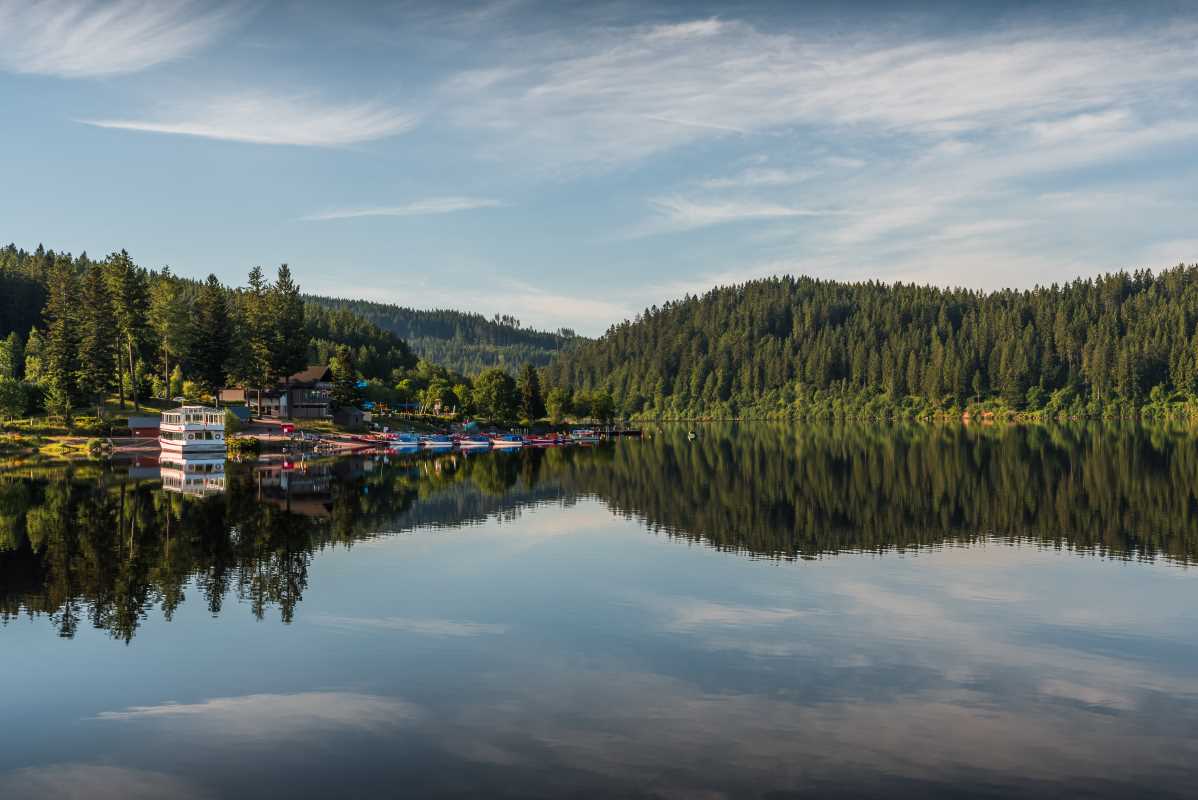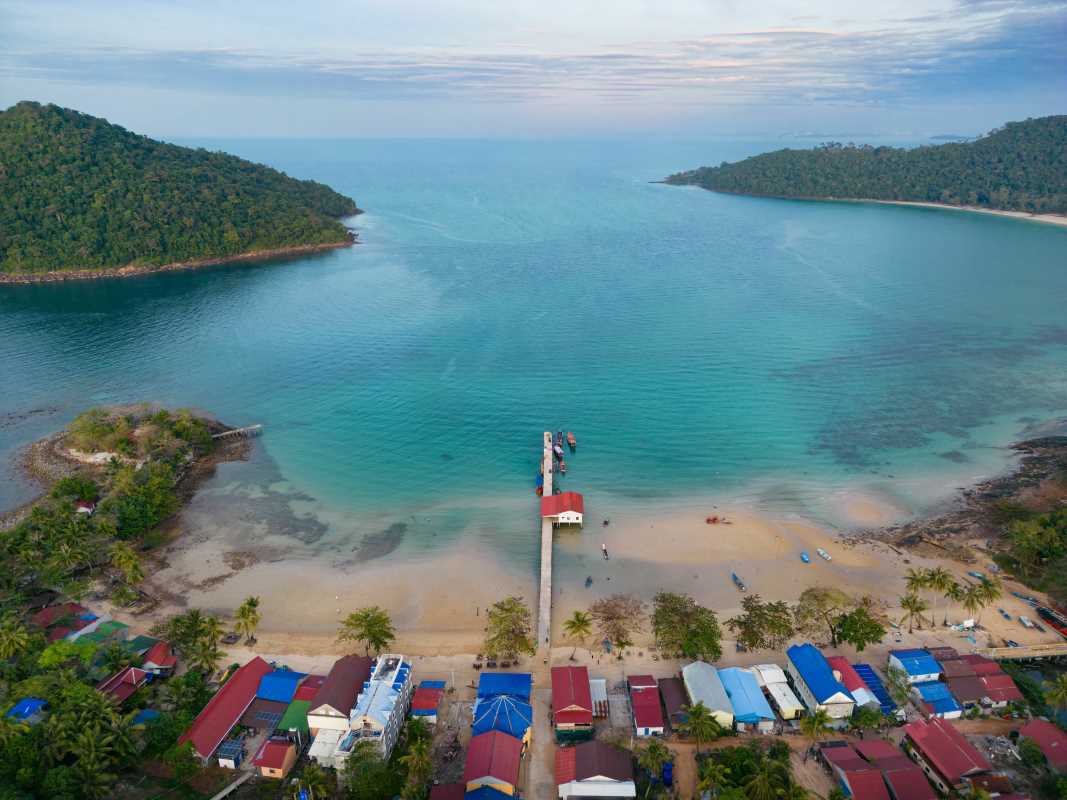If you're dreaming of an adventure in Thailand’s stunning wilderness without the price tag of a guided tour, you’re in for a treat! Thailand’s national parks are not only beautiful but also accessible for folks who prefer self-guided exploration. While some parks have stricter rules requiring guides for particular trails, several allow independent hiking, giving you the freedom to explore at your own pace. From waterfalls to limestone peaks, we’ll highlight some of the most iconic parks, their standout features, and tips to make your hike smooth and enjoyable. Pack your boots, grab a map, and get ready to uncover the wild side of Thailand!
1. Erawan National Park
Erawan National Park, located in Kanchanaburi Province, is famous for its seven-tiered Erawan Falls. This waterfall is a sight to behold, with emerald-green pools perfect for cooling off after a hike (when allowed). The park’s thick forests are also home to wildlife like macaques and hornbills, adding an element of surprise to your trek.
Good news for hikers! The main Erawan Falls trail is open for self-guided hiking, making it a favorite for independent travelers. This well-marked trail takes you through all seven tiers of the falls, offering plenty of photo ops and swimming spots along the way. Beware that a separate trail, the Khao Hin Lan Pee Nature Trail, does require permission and ranger accompaniment because it traverses denser forest areas. Plan ahead if this trail interests you.
Visitor Tips
- Visit early in the morning to beat the crowds and make the most of your experience.
- During certain seasons or ongoing conditions (e.g., public safety protocols like COVID-19), some areas may restrict access to swimming, so check ahead of time.
2. Khao Sam Roi Yot National Park
This coastal gem in Prachuap Khiri Khan Province is Thailand’s first marine national park. Its name means “Mountain of Three Hundred Peaks,” and it’s easy to see why. Dramatic limestone ridges, mangrove forests, and wetlands make this park a dream for nature enthusiasts. It’s also known for the iconic Phraya Nakhon Cave, where sunlight illuminates a hidden royal pavilion.
Hiking in Khao Sam Roi Yot without a guide is allowed on most trails, though a few remote areas may have restrictions. The popular trail leading to Phraya Nakhon Cave is self-guided but challenging due to steep and rocky terrain. Be prepared for a workout! If you’re interested in exploring beyond this trail, confirm local rules before you go, as details on some paths are tougher to access.
Visitor Tips
- Bring plenty of water and sunscreen for the trek to Phraya Nakhon Cave, especially on sunny days.
- Take note of tide schedules if you’re walking along coastal paths, as high tide can make access trickier.
3. Doi Inthanon National Park
Known as “The Roof of Thailand,” Doi Inthanon is the country’s highest peak. Located in Chiang Mai Province, the park is filled with lush forests, waterfalls, and farmland. It offers a cooler climate compared to other parks, making it a refreshing escape for trekkers. Aside from hiking, you can explore tribal villages and learn about the local Karen and Hmong communities.
Several trails in Doi Inthanon are perfect for self-guided hikes, such as the Ang Ka Nature Trail and the Kew Mae Pan Trail during certain times of the year. The Kew Mae Pan Trail is especially striking, offering breathtaking views of the mountains. Keep in mind, however, that other trails may require a guide to safeguard the park’s biodiversity.
Visitor Tips
- Dress in layers as the temperatures can change rapidly, especially near the summit.
- If you’re visiting in the rainy season, bring sturdy shoes with good grip to handle slippery paths.
4. Kaeng Krachan National Park
Kaeng Krachan, Thailand’s largest national park, is a paradise for hardcore nature lovers. Spanning across Phetchaburi and Prachuap Khiri Khan provinces, its dense forests, rolling hills, and mist-shrouded mornings are unforgettable. The park is also a haven for birdwatchers, being home to hundreds of bird species, including hornbills and eagles.
While Kaeng Krachan is less developed for tourism compared to other parks, it does offer some trails you can enjoy independently. It's important to keep in mind that many parts of the park, particularly deeper forest zones, require ranger accompaniment to preserve sensitive habitats and ensure safety. When hiking solo, stick to marked trails like the Ban Krang to Panoen Tung route for a manageable and rewarding experience.
Visitor Tips
- Avoid visiting during the rainy season (June to October) as trails can become muddy and harder to traverse.
- Come early in the morning for a higher chance of spotting wildlife.
Essential Tips for Self-Guided Hiking in Thailand
- Check Local Rules: Some national parks may change their policies depending on safety and environmental factors. Always double-check before your trip.
- Pack Smart: Bring plenty of water, snacks, sunscreen, bug spray, and a first-aid kit. A good pair of hiking boots is a must.
- Be Respectful: Stick to marked trails and dispose of trash responsibly. Respect wildlife by maintaining a safe distance.
- Stay Safe: Solo hiking is freeing, but it comes with risks. Make sure someone knows your route and expected return time.
Thailand’s natural parks are a treasure trove of beauty and adventure, and exploring them without a guide adds an extra layer of freedom to your trip. Every step offers something new. Respect the rules, prepare well, and you’re in for an unforgettable experience. Time to pack those hiking boots and hit the trails!
 (Image via
(Image via





